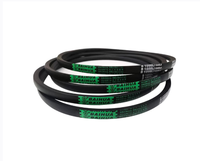Design Of Hexagon V Belt
-
(1) V-belts are usually endless belts. To facilitate installation, the shaft spacing and pre-tightening force should be adjusted. For a drive without a tensioner, the bearing position of one of the shafts should be able to move along the length of the belt.
(2) The transmission structure should facilitate the installation and replacement of V-belts.
(3) For horizontal or nearly horizontal belt transmission, the tight side of the belt should be on the bottom and the loose side on the top, which can increase the wrap angle of the small pulley.
(4) When multiple V-belts are driven, in order to avoid uneven load distribution of each V-belt, the length of the V-belt on the same pulley should be matched. All replacements must be replaced at the same time.
(5) The use of tensioning wheel transmission will increase the number of belt bending and shorten the life of the belt.
(6) In the transmission device, the flatness of the center plane of the grooves corresponding to the two pulleys should be less than 0.002a (a---axis spacing); the parallelism of the axis of the pulleys should be less than 0.006a.
(7) Ordinary V-belt and narrow V-belt shall not be mixed in the same transmission device.
Hexagon V Belt model selection: According to the design power p of the belt drive and the speed of the small pulley n, select the belt type according to the diagram. Whether the selected belt type meets the standard, the space location requirements of the transmission and the number of belts must be considered before the final determine.

